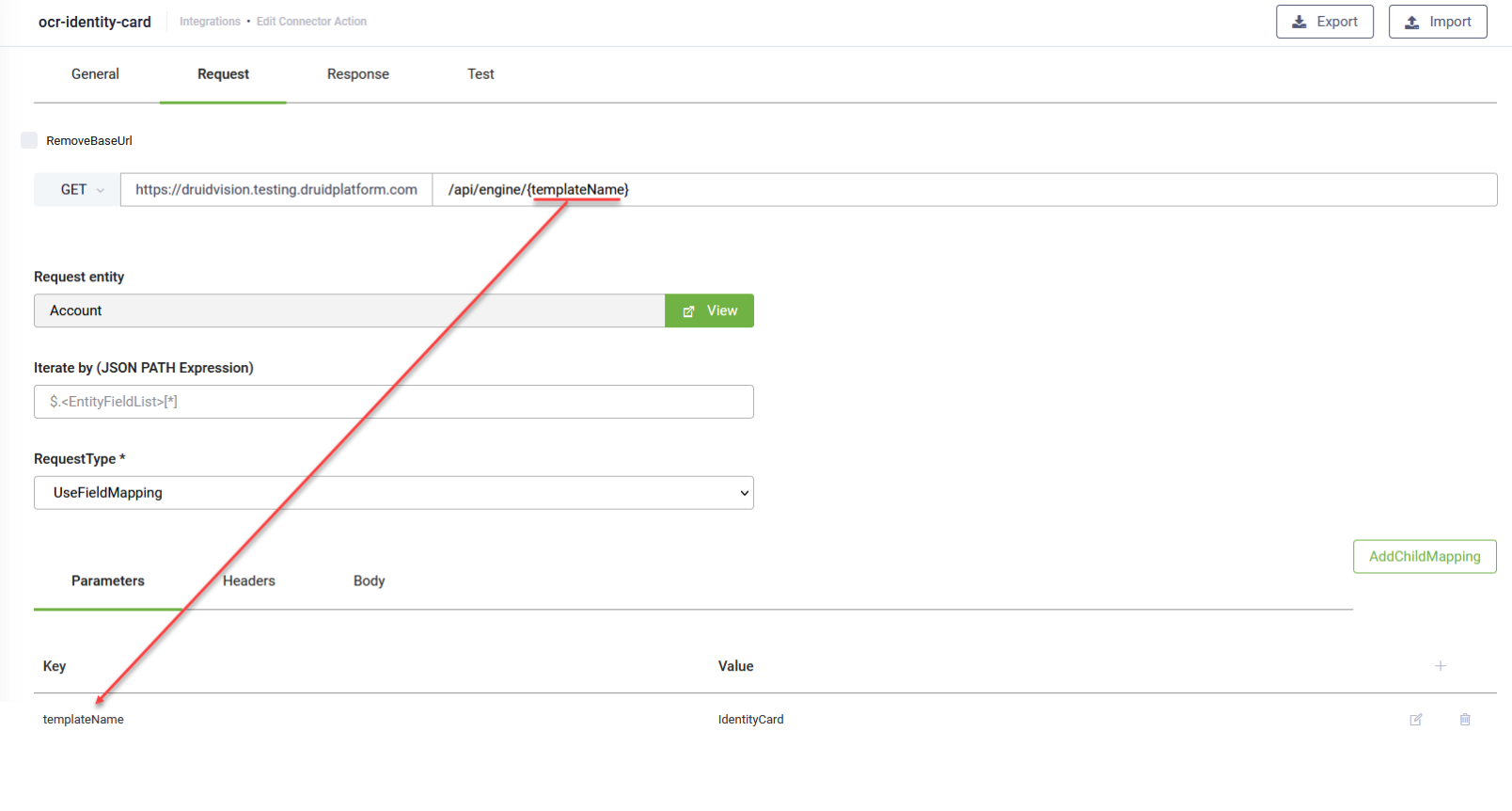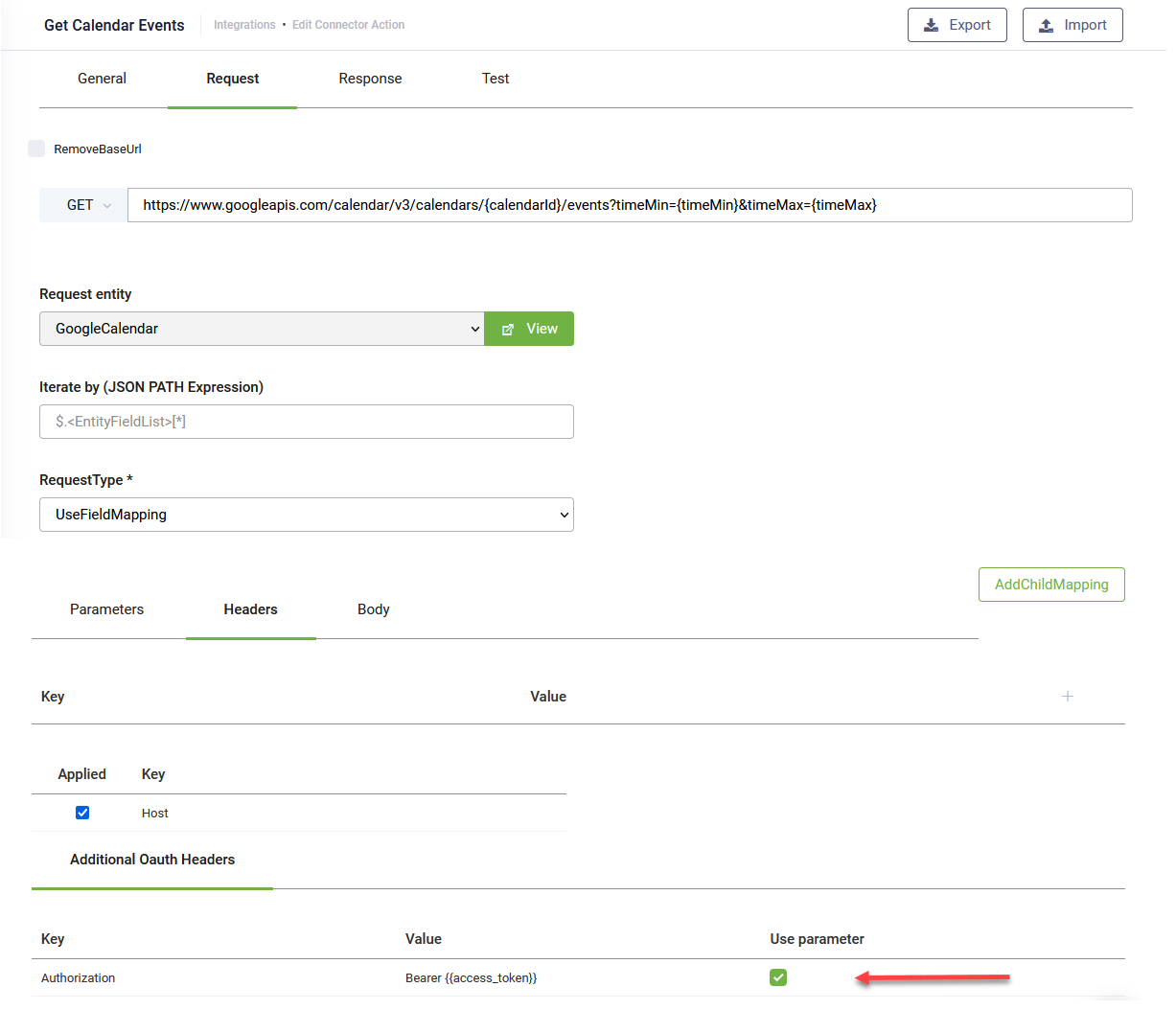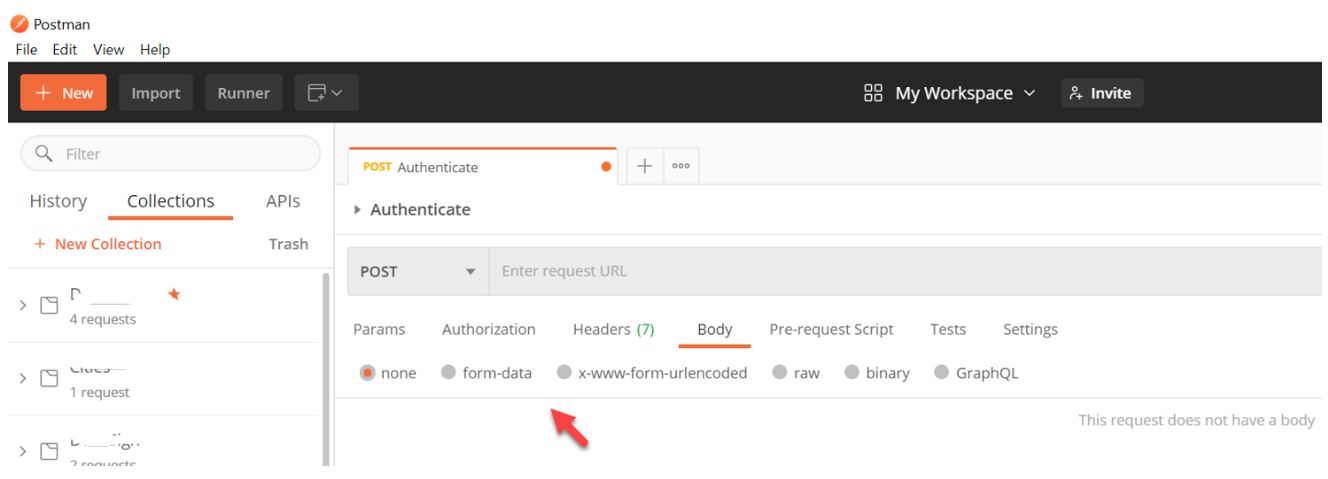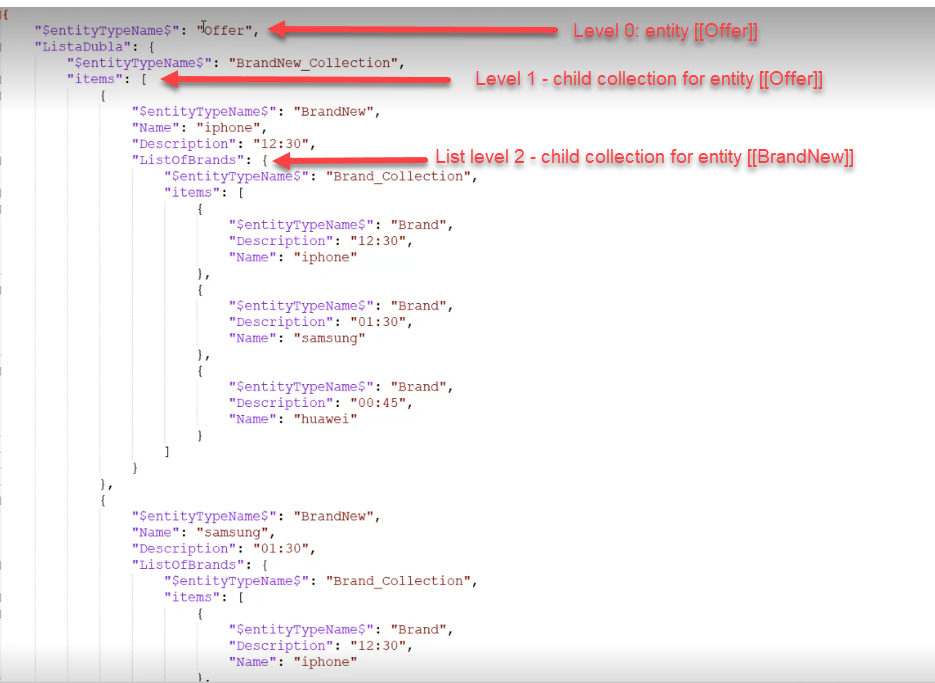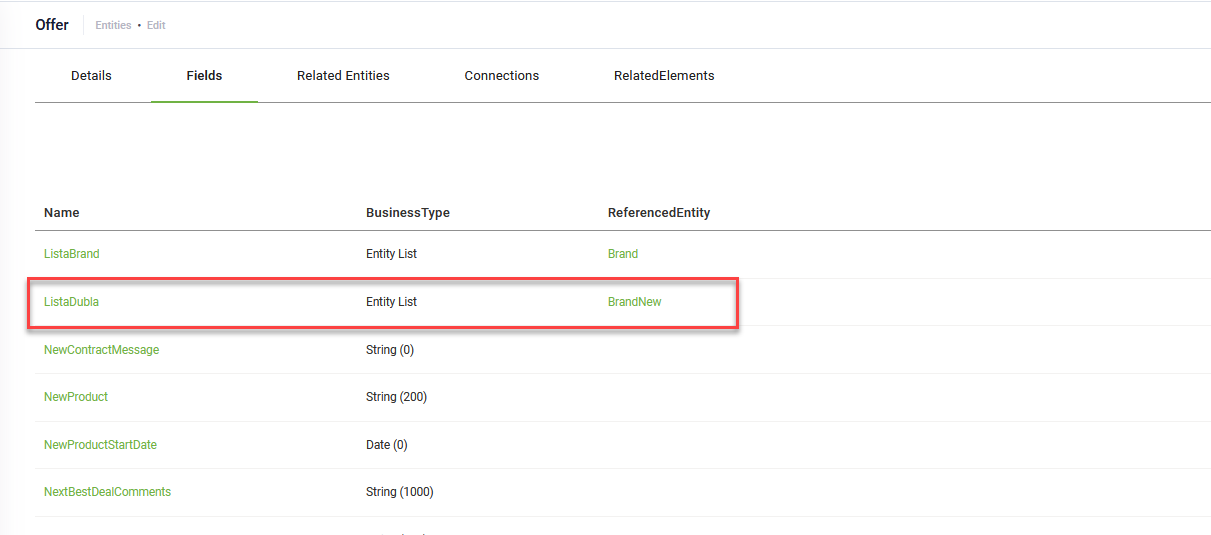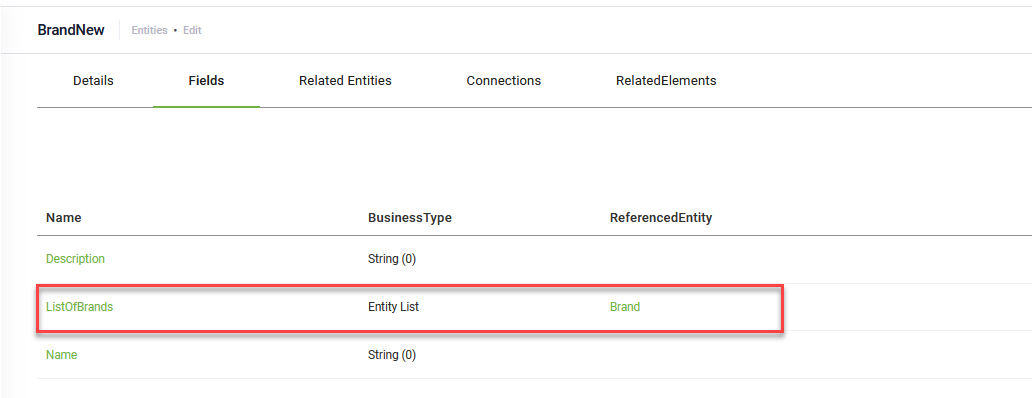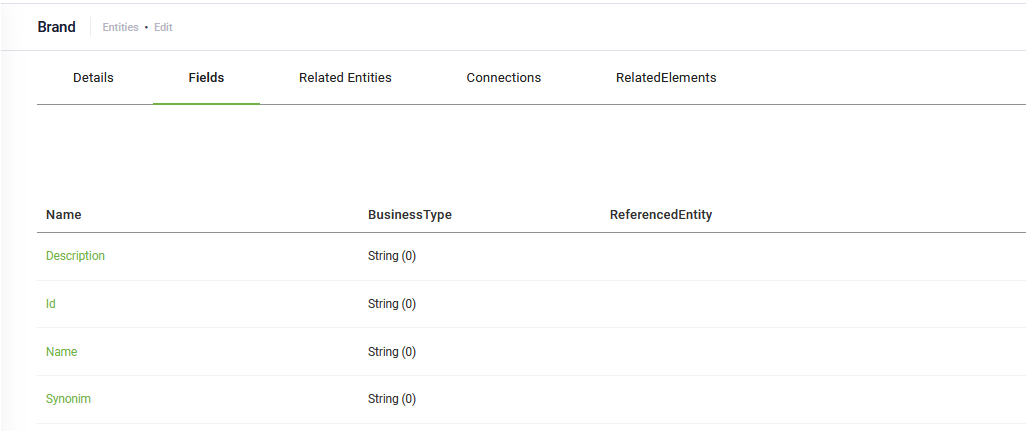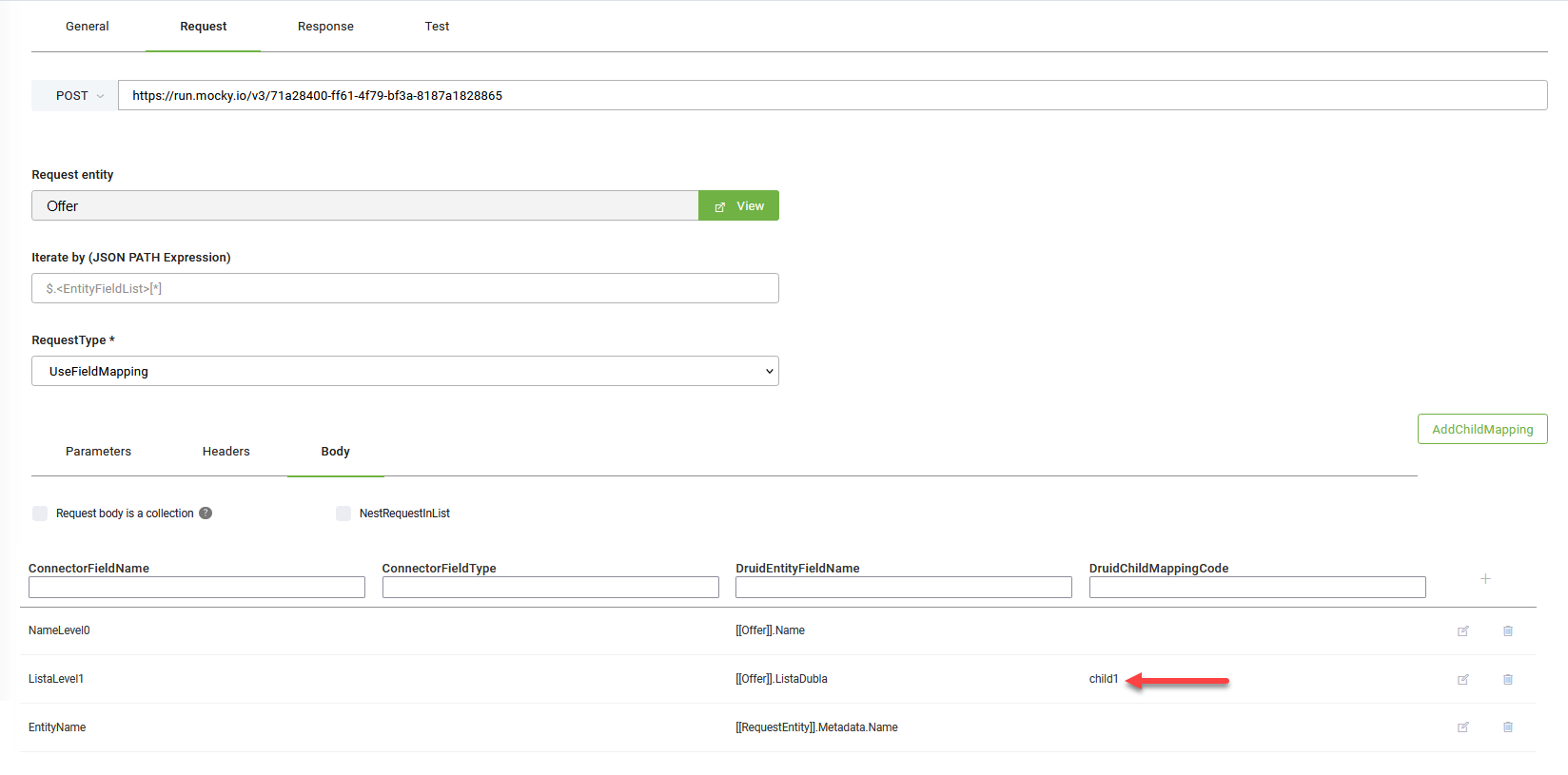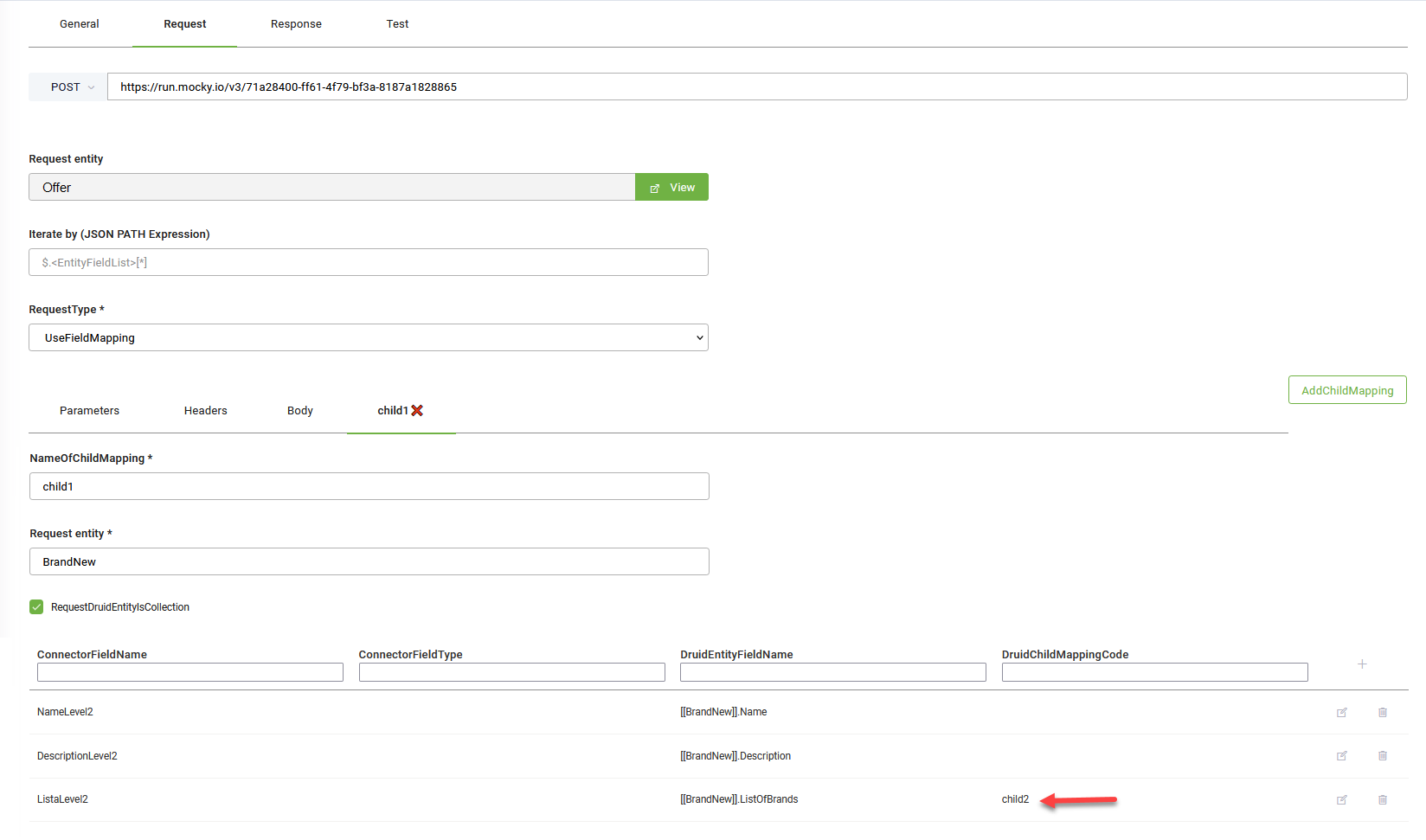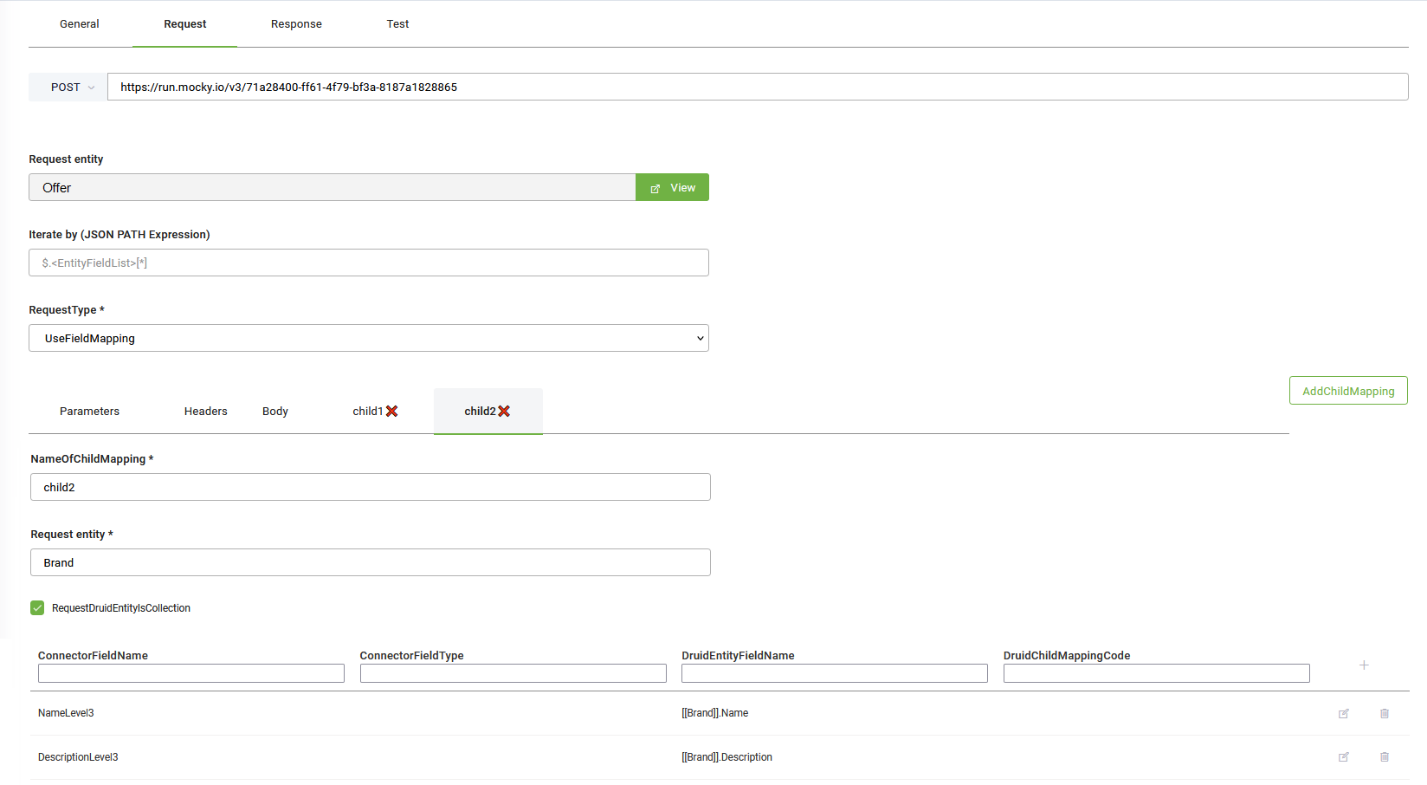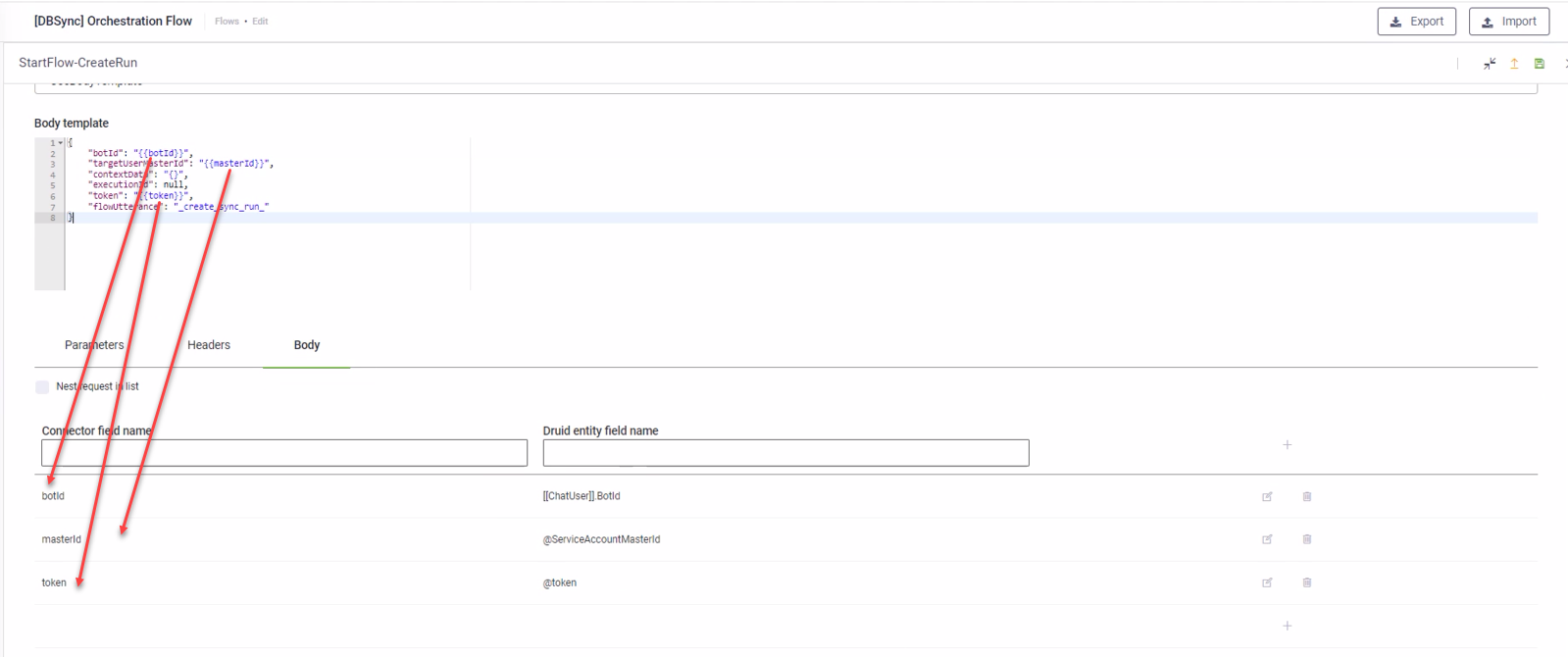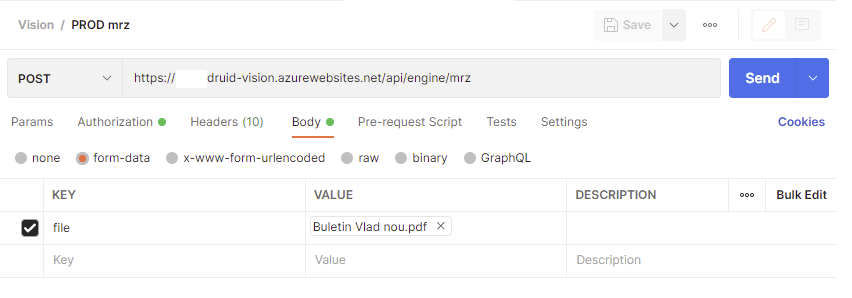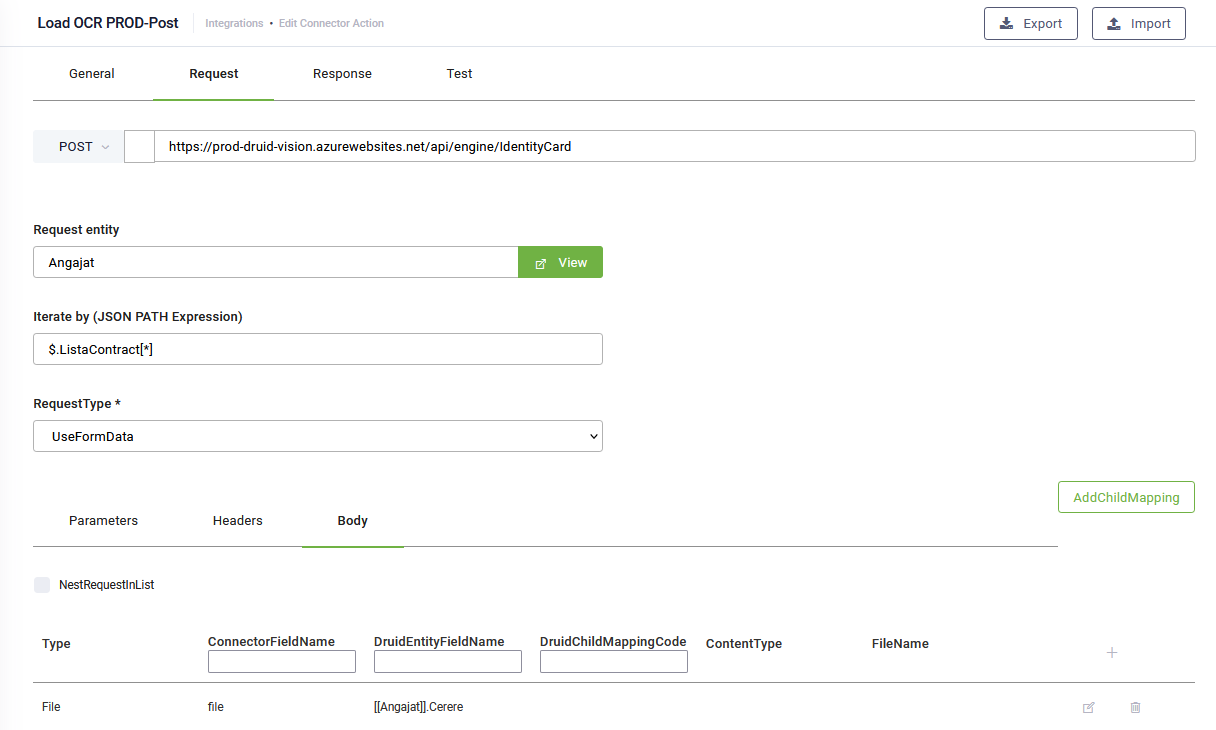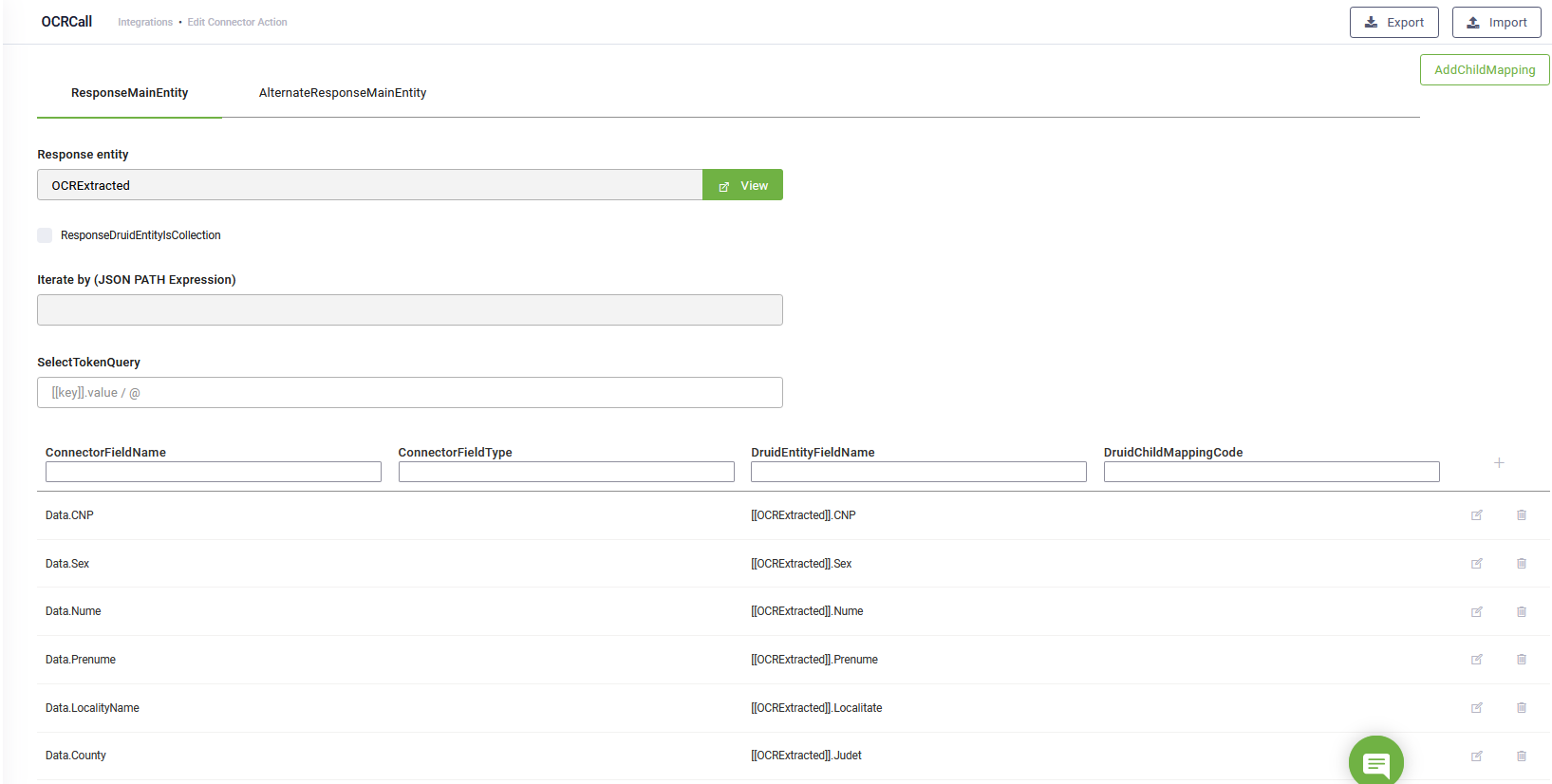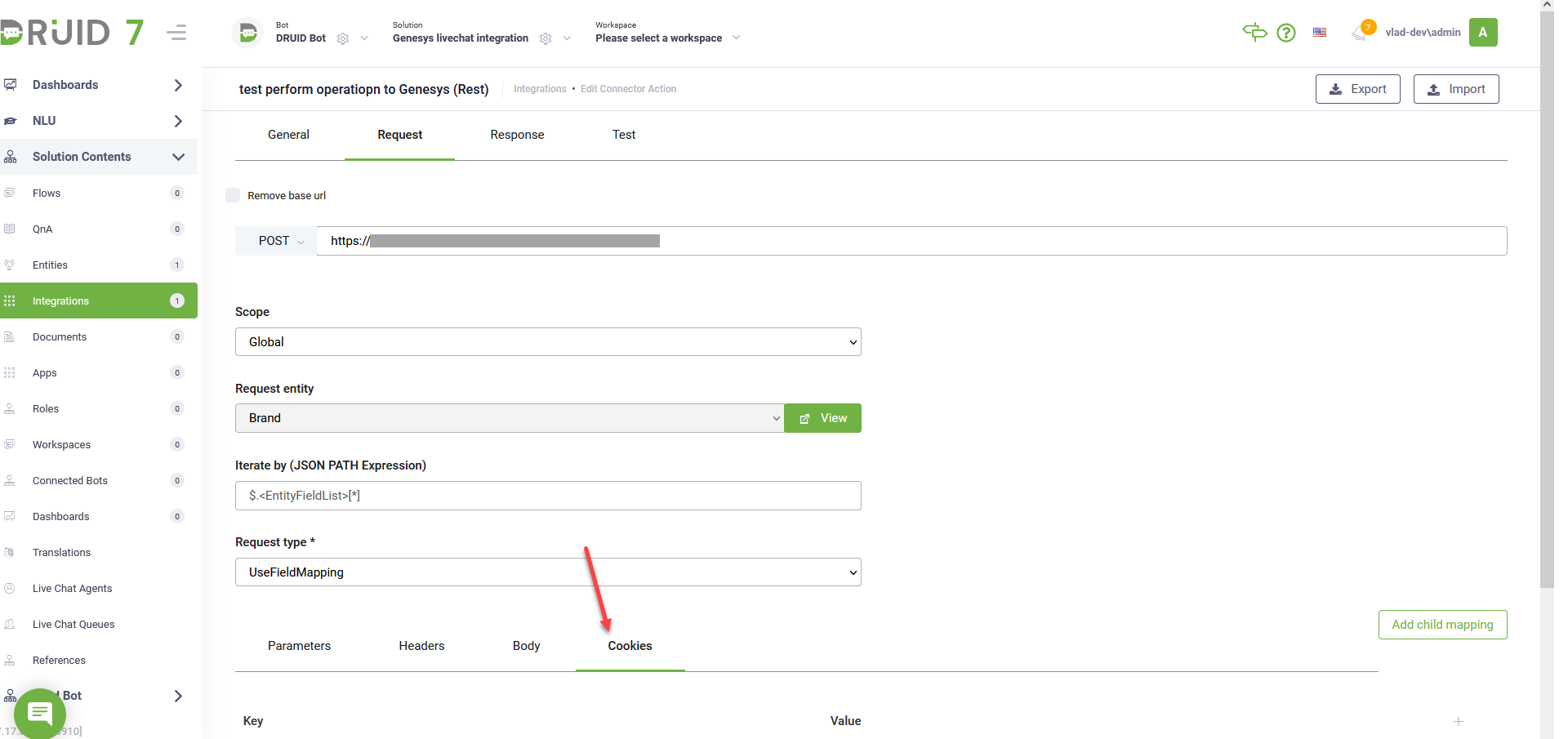REST Request Settings
Click the Request tab and set the request details.
|
Setting |
Description |
|---|---|
| API Resource URL |
The resource path to be called. It is comprised of a base URL (the URL of the REST App) and the API method. The base URL (not shown in the interface) is automatically included based on the settings in the Apps for the selected Connection Code. The base URL is set within the Apps settings and automatically used in all the integration calls. When you will move the settings to a different environment, you will need to change just once the base URL. Each third party API has specific method and resource URL for specific actions. In the DRUID ChatBot Platform, the REST endpoints include the HTTP verb (GET, POST, PUT, DELETE, HEAD, OPTIONS, PATCH, MERGE, COPY) to perform the task and the location (URL) from which the third-party API can access the resources they need to carry out their tasks. Select the HTTP verb and enter the endpoint.
If the URL is dynamic, use parameters. Example: https://base-url/{OrderId}/payments. Map the parameter OrderId in the Parameters tab, with run time values from the chat conversation. If you want to get the value of a specific parameter dynamically from within the conversation, include the parameter in the endpoint (E.g., &status={StatusName}) and make sure to map it in the Field Mappings > Parameters table. |
| RemoveBaseUrl | Removes the BaseURL which is automatically included based on the settings in the Apps for the selected Connection Code. Toggle on when you want to overwrite the BaseURL. |
| Scope |
Allows you to define the context for the integration task. Global means that the integration will be performed on the Request entity set on the connector action. If you want to perform an integration task on a context different from the global context set on the connector action, than from the Scope field, select Local and from the Request entity field, select the desired entity. Using the Local scope, you do all related queries directly inside the connector action instead of building a larger context outside the connector action via additional queries within the Flow Designer to put data inside the request entity and then send the data back to the connector action. NOTE: The Scope field is available in DRUID 5.23 and higher.
|
| Request entity |
DRUID uses it to pass input data to the REST call. This field is automatically fill-in with the request entity specified on the Connector Action if the Scope is Global. You refer this entity in all the Fields mapping on the Request tab. |
| Iterate By (JSON PATH Expression) |
Use it when you want to iterate the request for each element in the request entity. For example, you have all leave requests for a certain employee stored in [[Employee]].LeaveRequests (“Entity List” type field), and you want to insert the leave request in 3rd party tool (one by one, not by using bulk insert). Using the JSON Path Expression $.[[Employee]].LeaveRequests[*] in this field will make the connector run the task for each element in the $.[[Employee]].LeaveRequests collection. You can check your JSON Path expression using the JSON Path online evaluator. |
| RequestType | The type of request the integration call will make. For more information on the request types, see Request Body Types. |
Based on the selected RequestType and the parameters expected by the third-party API, you need to provide the parameters by using one of the following sections: Parameters, Headers or Body, and map the request parameters with the conversation context available in the Request Entity.
Make request using Parameters
If your endpoint contains path parameters, represented through curly braces {param1}&{param2} use the Parameters tab to map parameters within the URL with values in the Request Entity.
Make request using Headers
Use the Headers tab and table to add specific keys expected by the API in the Header section, typically to provide additional metadata about the operation you are performing.
Make request using Body
Use the Body tab to map the fields you want to include within the body call.
If your request type is Body Template (UseBodyTemplate option selected as Request Type) and the body is a nested JSON, click the Body tab and map the fields provided in the request (BodyTemplate field) to the DRUID fields which will store the values returned by the API.
Request Body Types
The DRUID ChatBot Platform allows authors to send various types of requests based on the data source they integrate with and the type of parameters (query or body). You can send the following types of request body types:
For request types, we are following Postman best practices.
Set request using Field Mapping
Use Field Mapping when the REST API expects the parameters as a JSON-formatted in the request body.
The DRUID Connector automatically generates a JSON based on the structure defined in Field Mapping.
By default, the DRUID ChatBot Platform generates a flat JSON object with the fields you define in the Body tab.
If you have a object in object data structure to send within the body (Body tab), you can use field mapping on level one and child mapping to indent fields and make a nested JSON objects data structure.
If your REST API endpoint expects data as collection, you have to set your request as a collection, as follows:
-
When you want to send multiple repetitive objects of the same type as a collection directly in the root of the body payload (the request object is a collection), select Request body is a collection. This option is available for DRUID version 1.59. In previous versions, you cannot send a collection of objects in the request body root.
- When you want to send a single object, but nested inside a collection, select NestRequestInList. Use this option when your request entity is NOT a collection.
The request body of the REST API call will have the following format:
[
{
"HolidayStartDate" : "2021-10-12",
"HolidayEndDate" : "2021-10-15",
"HolidayType" : "Leisure"
},
{
"HolidayStartDate" : "2021-05-08",
"HolidayEndDate" : "2021-05-11",
"HolidayType" : "Medical Leave"
},
{
"HolidayStartDate" : "2021-11-20",
"HolidayEndDate" : "2021-11-30",
"HolidayType" : "Leisure"
}
] The request body, in this case, will have the format as in the example below:
[
{
"EmployeeName" : "John Doe",
"EmployeeRole" : "Database Administrator",
"EmployeeDepartment" : "IT"
}
]Choosing one option will make the other one disappear from the UI.
How to map fields for object in object request data structure
While mapping fields for requests that have an object in object data structure might seem difficult, it is straightforward. The mapping depends the data structure and the object level.
Throughout this section, we will use as example the use case for sending an offer with the list of brands and their details to a REST API endpoint.
To understand how fields mapping is working, let’s take a look on how the object in object request might look like for the use case above:
We reflect this data structure in DRUID:
- The [[Offer]] entity some static fields (flat data type) and it also contains a field of type entity list, ListDubla that references the [[BrandNew]] entity
- The [[BrandNew]] entity has a field of type entity list, ListOfBrands referencing the [[Brand]] entity.
- The [[Brand]] entity contains only flat data type.
If you’ve properly set the data structure in DRUID (DRUID entities, their fields and relationships), all you have to do is to map the fields of the request entity in the request Body, as follows:
- Map the fields of the root (level 0) object (in our example, [[Offer]]).
- On the row where you map a field of type entity list, in the column DruidChildMappingCode, enter a unique identifier for the child mapping (child object mapping).
- Click the
 button.
button.
- In the NameOfChildMapping field, enter the unique identifier you provided when mapping its parent object (in our case, “child1)”.
- In the Request entity field, enter the name of the entity referenced by the parent object, referenced by the field of type Entity List (in our case, the [[BrandNew]] entity is referenced by the [[Offer]].ListaDubla field).
- Map the fields of the child object (in our case, the fields of the [[BrandNew]] entity).
- For any subsequent child objects, you need to add the child mapping code on the parent mapping and map the fields of the child object.
If the child object is a collection, in the child mapping page, select RequestDruidEntityIsCollection.
You can now set the response.
The DRUID ChatBot Platform enables you to do enhance fields mapping by using expressions. For information on how to use expressions in requests field mapping, see Using Expressions in Request mappings.
If you need a JSON with a complex structure, use Body Template instead.
Set request using Body Template
Use Body Template when you want to send complex JSON structure to the external data source.
In the Body Template field, enter the data you want to send making sure to provide the fields of the request entity between double curly brackets ({{ }} ), then map the fields of the request entity in the request Body.
Set request using Form Data
Use this type of request to send a file to the REST service. E.g., to perform Optical Character Recognition (OCR) and data extraction from an identity card.
Postman example
Setting the Request in DRUID
Setting the Response
Set request using Binary
Use Binary when you want to send information you can't enter manually in your request body, such as image, audio, and video files (you can also send text files).
Set request using www Form Url Encoded
Use this type of request when the API requires url-encoded data in the request body.
Cookie-based Authentication
Some REST APIs can be called directly from the browser using cookie-based authentication instead of a bearer token or basic authentication in the request header. The browser automatically attaches the cookie to the API call, allowing you to authenticate the request using the browser's cookie.
To configure a cookie for a REST call:
- In the request settings, click the Cookie tab.
- In the mapping table, map the cookie name (key) and its value. You can set the cookie value as a static string or retrieve it from a DRUID variable or entity.

